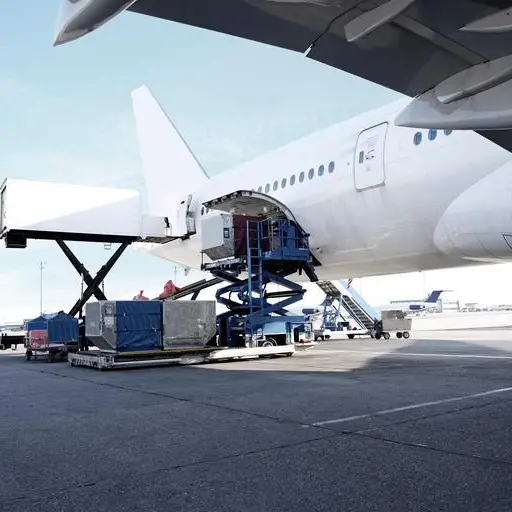PHOTO
Zander Muego, Partner at Thomas & Adamson. Image Courtesy: Thomas & Adamson
The new year is on the horizon and Thomas & Adamson (T&A), the international project management and cost consultancy firm, expects the construction industry’s evolution in 2024 will be fuelled by a mix of existing trends and fresh drivers. Rising raw material prices, labour shortages, higher labour costs, high demand, high competition, and government policies all influenced the built environment in 2023.
Looking ahead, the need to deliver projects on schedule and budget, maintain profit margins, new government mandates and legislations post COP28, and the urgent need to decarbonise supply chains and the delivery and operation of structures are all expected to shape the construction market in 2024.
Post COP28, the challenge to preserve our planet by staving off catastrophic climate change continues to gather momentum, which means construction stakeholders will have to become more acutely focused on doing their part for the future of the planet. Clients will likely seek out construction partners who mirror their sustainability goals, which means companies that champion sustainable development have an opportunity to standout in the market and win lucrative business.
Digital Construction
As projects become increasingly complex, coupled with the greater demand for efficiency, productivity, communication, collaboration, and compliance with new building regulations, construction project- and cost-managers will look to better leverage Building Information Modelling (BIM) and Construction Management Softwares (CMS) in 2024.
Market Research notes that while the BIM market was worth $8.89 billion in 2020, it is projected to reach $23.2 billion by 2026, as a growing number of organisations look to amplify their use of BIM to not only create and deliver projects, but leverage these models to manage the operations and maintenance of buildings throughout the structure’s entire lifecycle. Similarly, the CMS software market is also poised for significant growth, going from $9.3 billion in 2021 to a projected $23.9 billion in 2031 according to Allied Market Research. CMS has proven effective at enabling construction teams to better manage a project’s planning, scheduling, communication, and documentation, and deliver improved efficiency and reduced costs on projects, which is why it’s likely to see greater use across the built environment.
The demand for greater construction efficiency and productivity will also see the burgeoning trend of using drones and unmanned aerial vehicles (UAVs) grow in 2024. Drones have already proven adept at quickly and easily performing site surveys and mapping of construction sites, thereby providing accurate data that can be used to better plan and manage the project in question. Drones are also increasingly being used to quickly and efficiently perform inspections of hard-to-reach or dangerous areas, which offers the added bonus of enhanced worker safety. A new breed of cost-effective drones can now even be deployed to navigate and inspect complex HVAC duct systems – inspections were in the past arduous, costly and time-consuming tasks.
In 2024, should the relevant legislation be passed by authorities, we may also see heavy-duty drones perform material deliveries to jobsites, and potentially even from stores onsite to where they are needed on the project being developed. Drones could also be used to scan and rapidly create 3D models of construction sites when needed, which can be used to visualise the project more accurately and identity potential problems.
Supply Chain
From a supply chain standpoint, T&A expects the cost of most essential construction materials to climb in 2024, albeit by a smaller margin than what has been observed in recent years. Weak economic conditions in a number of international markets will have a knock-on effect on construction in those markets, which could ease some of the pressure that the global supply-chain has been under since the outbreak of COVID-19. The availability of local materials and/or viable alternatives in some markets will also have an impact on construction projects in 2024.
Increased usage of prefabrication and modular construction techniques is also on the cards in 2024 as both offer several advantages to traditional delivery methodologies. By leveraging controlled factory environments to produce individual components or entire rooms, companies can significantly reduce wastage, while achieving faster project delivery and greater precision and quality. Hospitality brand Marriott recently said that it estimates offsite construction will reduce a hotel’s average construction time by eight months, allowing developers to start operating sooner.
Similarly, 3D printing technology could become more commonly used as a method of project delivery in 2024. 3D printers have already delivered several structures across the Middle East and around the world, and while 3D printing hasn’t fully taken off as yet, it’s potential to deliver certain types of structures at attractive price points and in record times is apparent.
In some markets, the cost of a basic 3D printed home is said to be around US $10,000, however that could be as little as $4,000. Apart from the cost benefit, 3D printing reduces waste and turnaround times, and as just a single machine or an identical group of machines is needed to mass print 3D designs with minimal labour needed onsite, 3D printing could potentially takeover the delivery of certain types of projects, such as affordable housing in the new year.
About Thomas & Adamson
The international construction and property consultancy established in 1935 has gone from strength to strength, building its UK and international presence, with offices strategically placed throughout UK, Europe, UAE and USA. T&A’s expertise ensures it understand client needs and adds value to their business in creative and effective ways. Trusted relationships are developed that help clients manage the construction and operation of their built assets.
Services:
Cost Management, Project Management, Mechanical and Electrical Services Solutions, Building Surveying, Construction Safety Services, Facilities Management, Strategic Advisory Services
Industry sectors: Education, Health, Hotels & leisure, Life sciences & technology, Masterplanning & regeneration, Offices, Retail, Residential
http://www.thomasandadamson.com




















